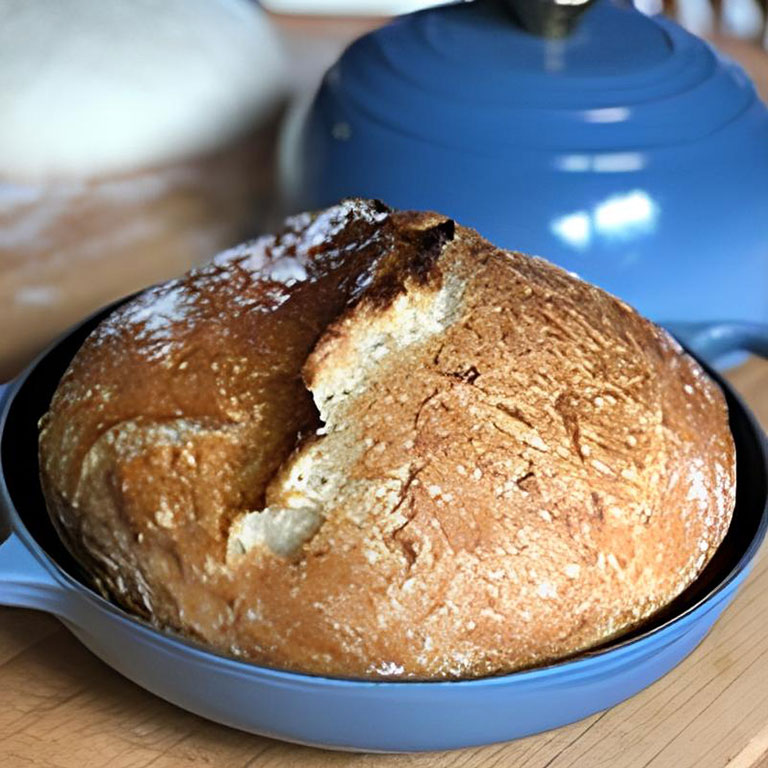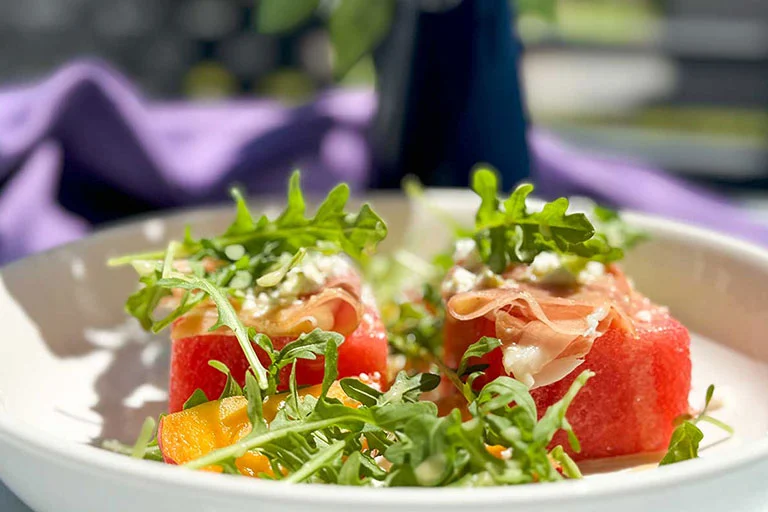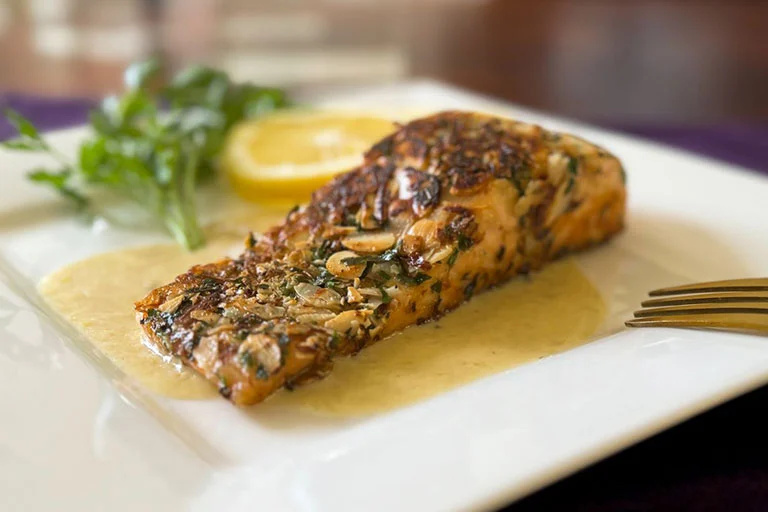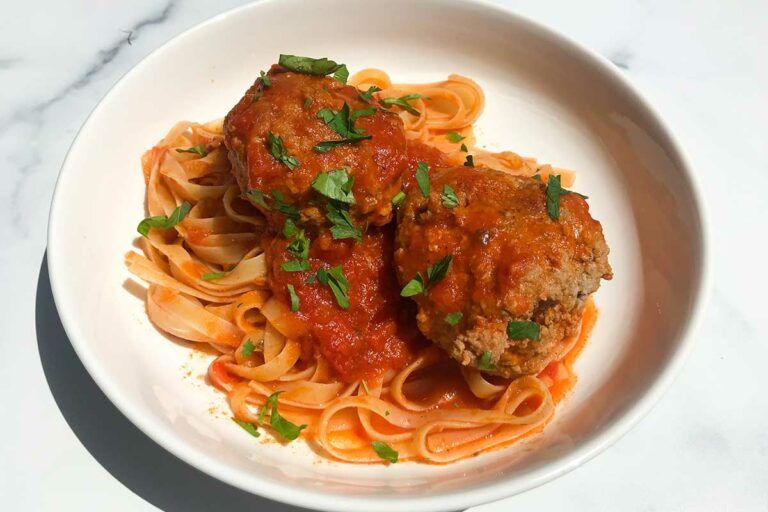
My Curated Tastes is reader-supported. When you buy through links on our site, we may earn an affiliate commission at no extra cost to you. As an Amazon Associate I earn from qualifying purchases.
My three-meat meatballs and tagliatelle is a classic and makes regular appearances at my house. These meatballs are inspired by the meatballs served at Rao’s Italian Restaurant in New York City. I’ve slightly changed some ingredients (I use a mix of cheeses and more garlic) and I cut back on the amount of water used, but you get one amazing meatball when you mix all the meats. Once you’ve made these, be sure to use them in my three-meat meatball sandwich – yum!
These aren’t hard to make and are great for a big Sunday night dinner. Pasta and meatballs, red wine, some roasted garlic and Parmesan bread and maybe some cannoli dip make Sunday a delicious day. Perfect for inviting friends and family over to relax, eat, drink and laugh! Heaven!
How to make three meat meatballs
- I use fresh breadcrumbs in this dish (not the canned version you buy in the grocery store). They are simple enough to make so don’t skip this step. It lightens up the whole meatball. I use day old Italian bread (about 5 slices). Just rip the bread into pieces and throw them in a blender or food processor to create bread crumbs. You’ll need two cups.

- Next, add all the meat to a large bowl and using your hands, combine everything gently. Don’t over mix. You don’t want to overwork the meat. Then, add your eggs, two cheeses, parsley, minced garlic, about a teaspoon of kosher salt and 20 grinds of black pepper. Mix everything again until well incorporated.

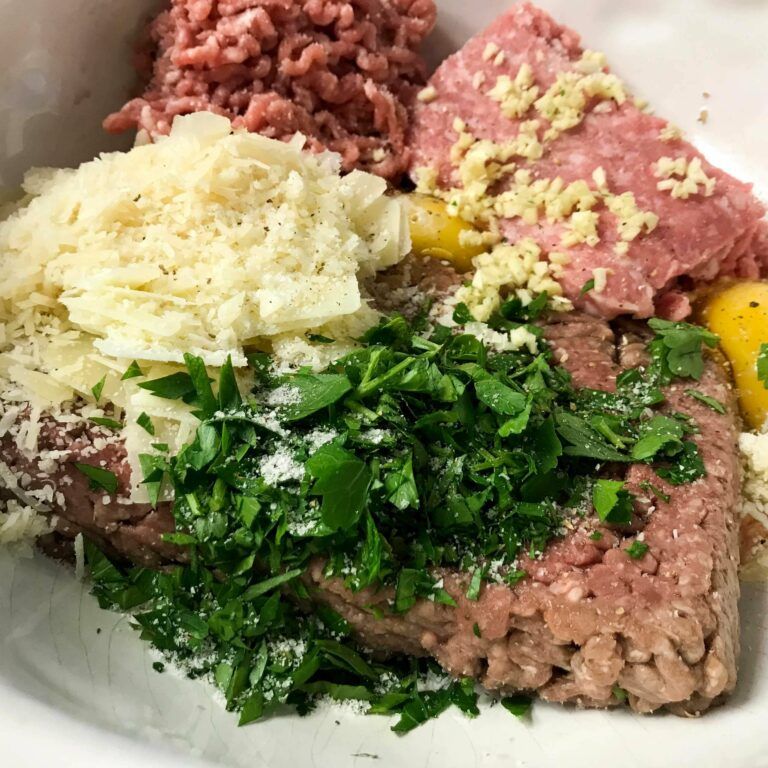
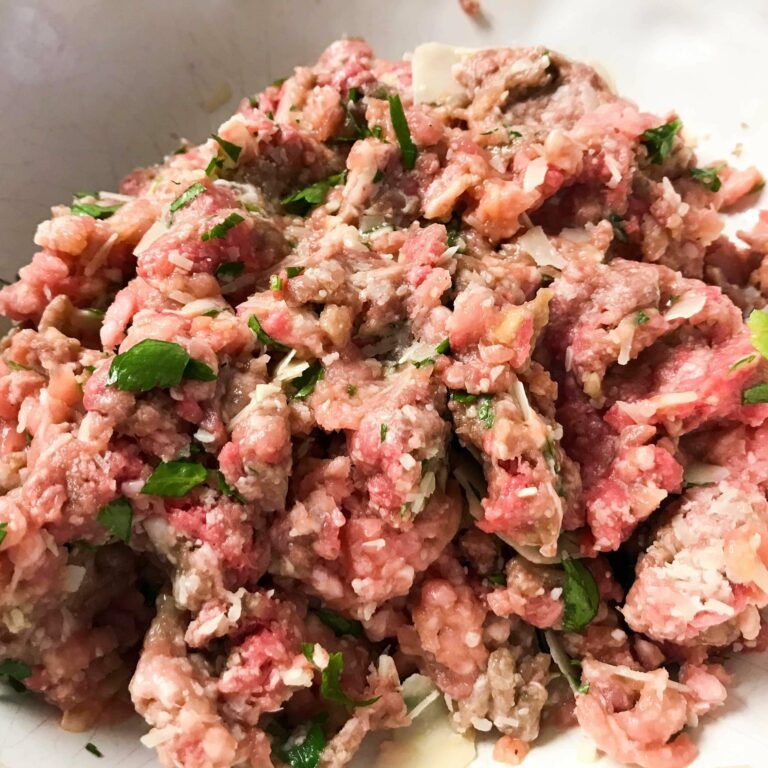
- Now, add those fresh breadcrumbs and mix everything again. Start adding the water, about 1/2 cup at a time. This mix is going to be very wet (You’ll think you’ve added to much water at first.). The mixture will begin to absorb the water and the mixture will be very soft.
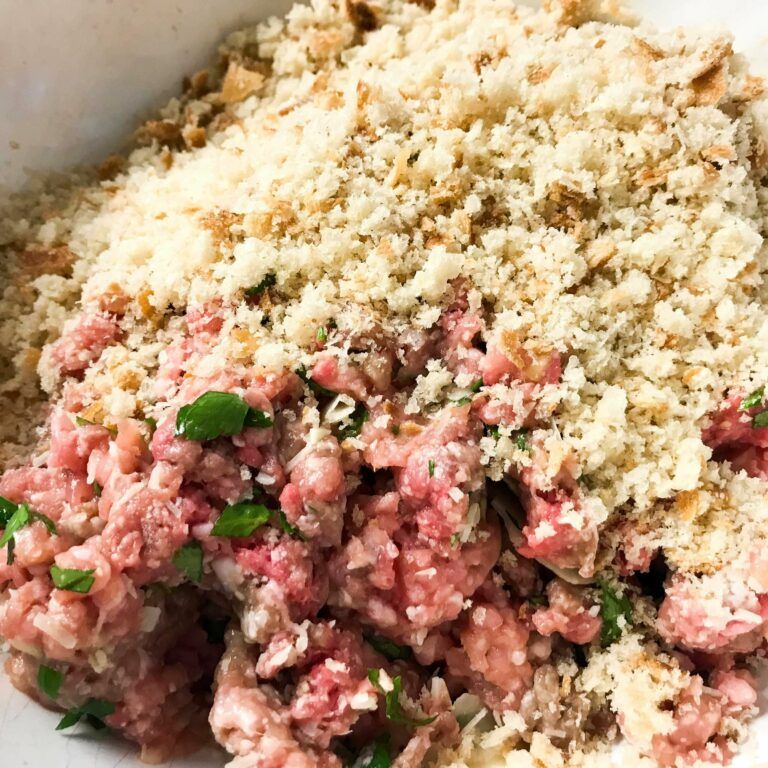
- Next, roll the mix into 3-inch meatballs. You will get about 12 meatballs.

- Heat your olive oil or canola oil in a large cast iron skillet until very hot. What you don’t want is for it to be smoking. Start adding the meatballs but don’t crowd the skillet. You’ll cook these in two or three batches.
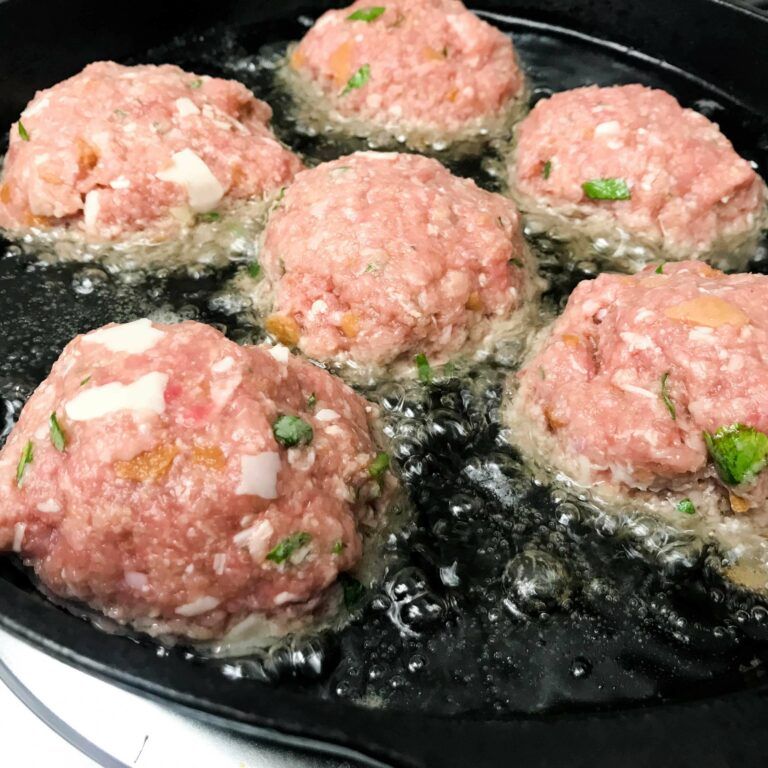
- Turn the meatballs two or three times so that they are brown on all sides. They will finish cooking in the sauce, so you are not completely cooking them when frying.
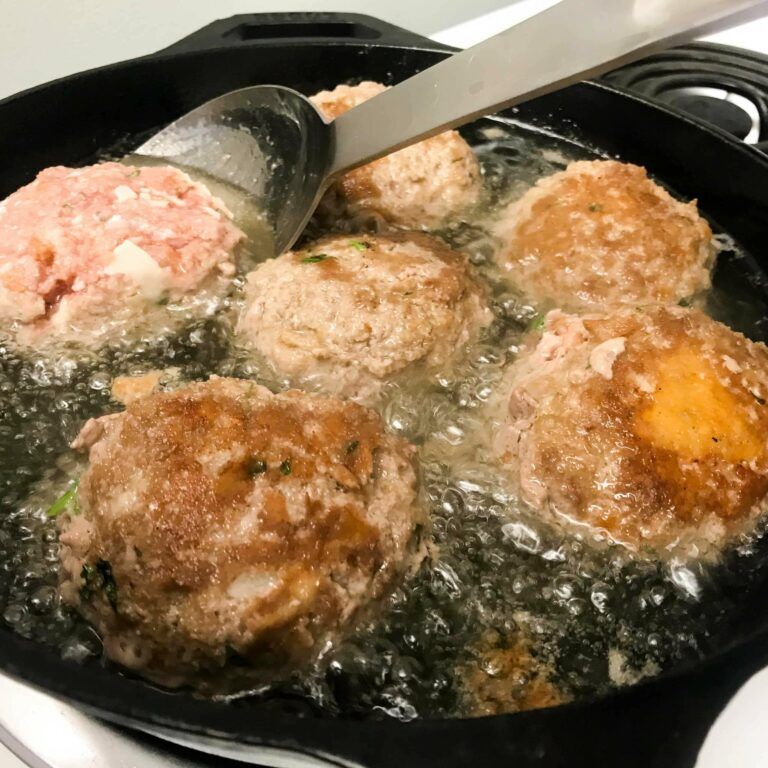
- Place the meatballs on paper towel lined plates to absorb the excess oil.

- Meanwhile, you should have a large stock pot or dutch oven with the marinara sauce heating on the stove over medium heat. I use my marinara sauce in this recipe, but you could also try my Tomato Butter Sauce with this recipe. Both are delicious. Another option is to use a good quality store bought jarred sauce. Rao’s Marinara Sauce is a great choice.
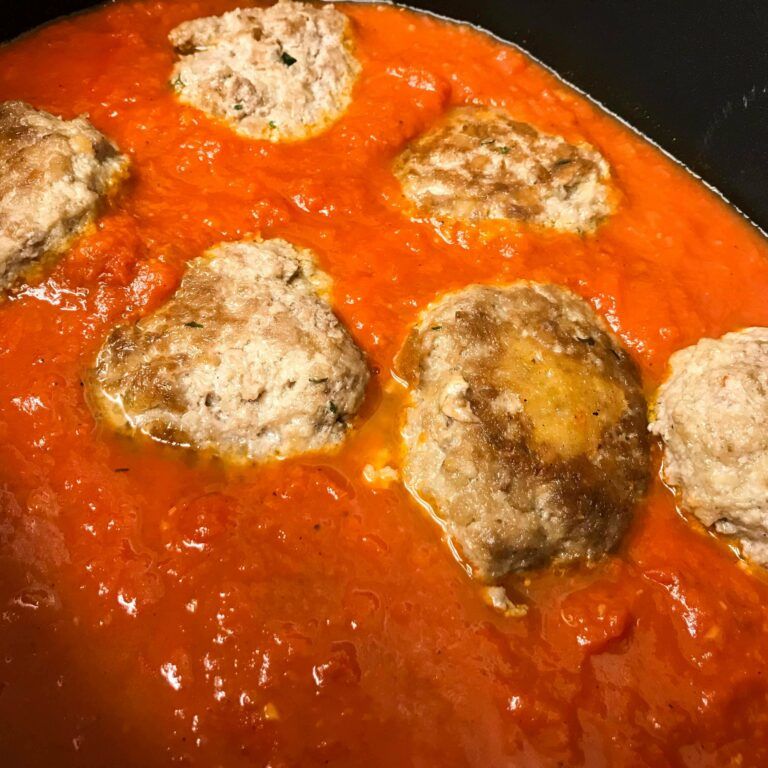
- Add the meatballs to the sauce and let cook for about 25 minutes. While the meatballs finish cooking, prepare your tagliatelle pasta per the package instructions. Tagliatelle is my favorite type of long noodle pasta but you can always use spaghetti, bucatini or fettuccini in this recipe.
- When the pasta is done, I drain the pasta in a colander and then add it back to the pot. Ladle in some of the warm sauce and toss to coat all the pasta. Add the pasta to shallow pasta bowls and top with one or two meatballs, a sprinkle of parsley and serve more grated Parmesan on the side. Dig in and enjoy. This is comfort food in a bowl.
Frequently asked questions and answers about making three-meat meatballs
The Maillard reaction is a chemical reaction between amino acids and reducing sugars that occurs when proteins and carbohydrates are heated together, typically at temperatures above 140°C (285°F). It’s named after French chemist Louis-Camille Maillard, who first described it in 1912.
This reaction is responsible for the browning and complex flavor development in many cooked foods. When you see the golden-brown crust on bread, the caramelized surface of a grilled steak, the rich color of roasted coffee beans, or the appetizing brown of cookies fresh from the oven, you’re witnessing the Maillard reaction at work.
The process creates hundreds of different flavor compounds, which is why Maillard browning produces such rich, complex tastes and aromas. These can range from nutty and toasty to meaty and savory, depending on the specific amino acids and sugars involved, as well as factors like temperature, time, pH, and moisture content.
The Maillard reaction is different from caramelization, which involves only the browning of sugars at higher temperatures. The Maillard reaction requires both proteins (amino acids) and sugars to occur, making it more complex and producing more diverse flavors.
Understanding this reaction helps explain why techniques like searing meat, toasting spices, or baking at the right temperature are so important in cooking – they’re all ways to harness the Maillard reaction to develop deeper, more appealing flavors.
The internal temperature should reach 160°F when measured with a meat thermometer. Visually, they should be firm to the touch and no longer pink in the center when cut open. If cooking in sauce, they typically need 20-25 minutes of simmering. Baked meatballs usually take 18-22 minutes at 400°F.
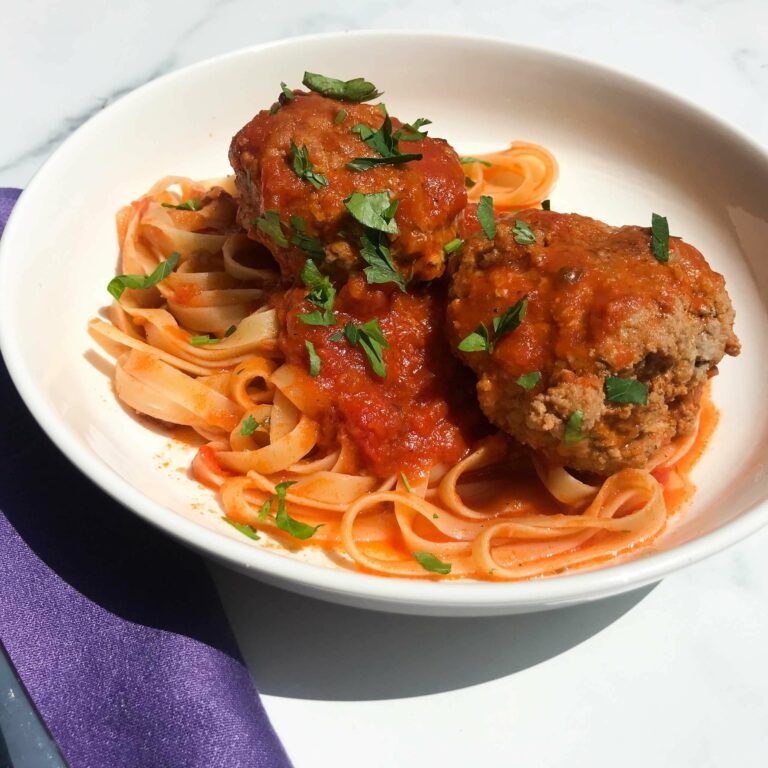
Did you enjoy this recipe? Be sure to leave a rating and comment below. I’d love to hear from you. Like Italian food? Try some of my family’s favorite dishes:

Three-Meat Meatballs and Tagliatelle
Nutritional information is only an estimate. The accuracy of the nutritional information for any recipe on this site is not guaranteed.
Ingredients
- 1 Lb. Ground beef
- 1/2 Lb. Ground pork
- 1/2 Lb. Ground veal
- 2 Large eggs
- 1/2 Cup Parmesan, grated or shaved
- 1/2 Cup Pecorino Romano, grated
- 2 Tbsp. Italian parsley, chopped
- 1 Garlic clove, finely minced
- Kosher salt to taste
- Freshly ground black pepper to taste
- 2 Cups Fresh breadcrumbs
- 1 1/2 Cups Lukewarm water
- 1 Cup of Olive oil or Canola oil
- 6 Cups Marinara Sauce
- 1 Lb. Tagliatelle pasta
- Grated Parmesan to finish
- Chopped flat leaf parsley to finish
Instructions
- In a large bowl, combine the beef, pork, and veal. Add the eggs, cheese, parsley, and garlic; season with salt and pepper. Mix everything to combine. Add the breadcrumbs and mix again. Add the water, 1/2 cup at a time, until the mixture is really moist but everything is incorporated. Shape into 3-inch balls.
- In a large cast iron skillet over medium-high heat, heat up the oil. When the oil is very hot but not smoking, fry the meatballs in batches. You’ll turn once or twice until brown on all sides. They will finish cooking in the marinara sauce. Remove the meatballs from the skillet and put on a paper towel lined plate to remove excess oil.
- While the meatballs are frying bring your homemade sauce to a low simmer in a large stock pot. Add the cooked and drained meatballs to the sauce and let cook 20-25 minutes until cooked through.
- While the meatballs simmer, cook the pasta per the instructions on the package. Drain the pasta in a colander and then add to sauce. Alternatively, you can add the pasta back to the pot and add some of the sauce from the simmering meatball pot. Toss the pasta so it is covered with sauce. In shallow, pasta bowls, serve the meatballs over the pasta and sauce. Sprinkle with some chopped parsley and serve additional grated Parmesan on the side. If you like the meatballs, try my Holiday Meatballs and my Lamb Meatballs with Baked Feta Pasta.






